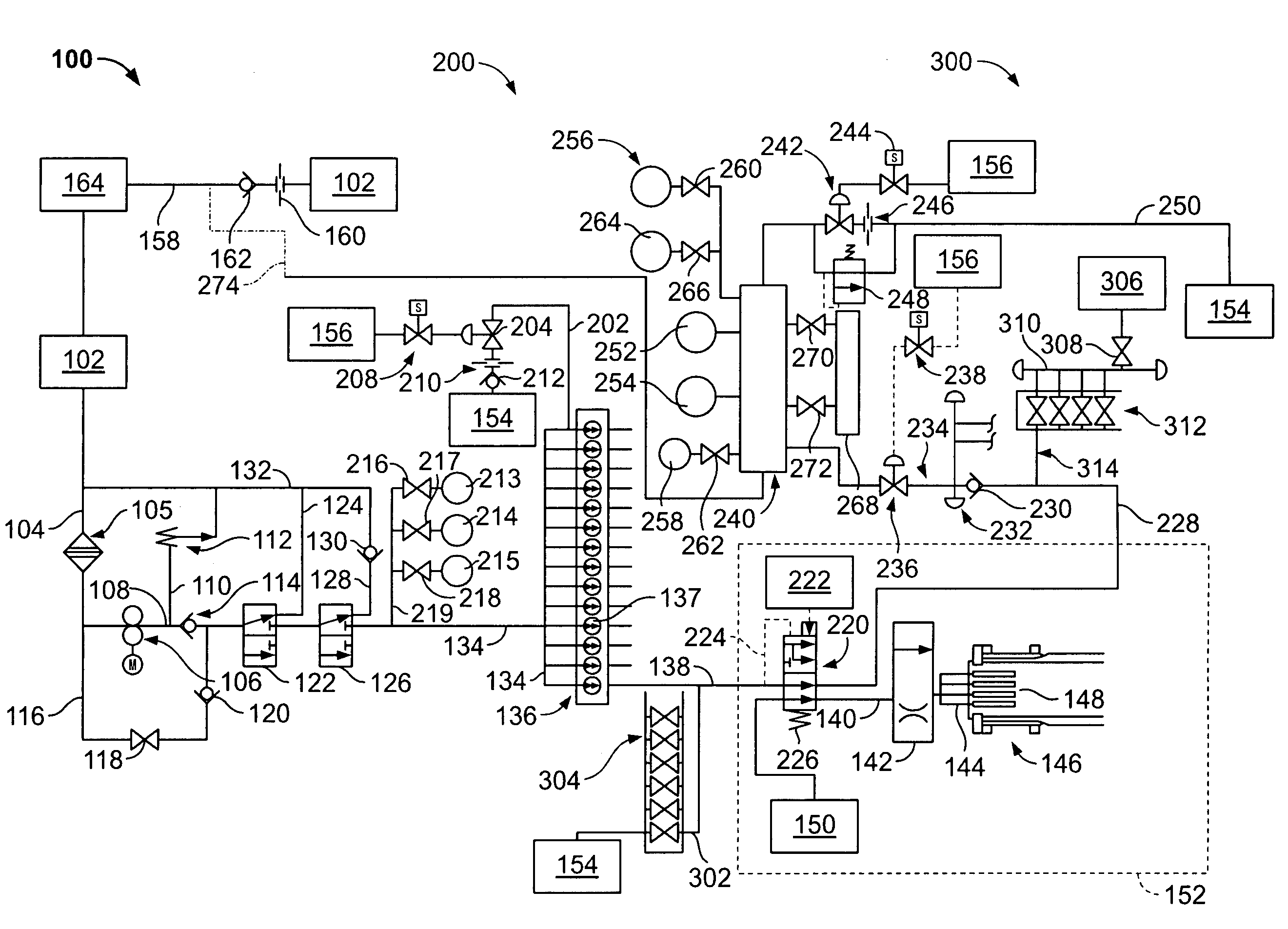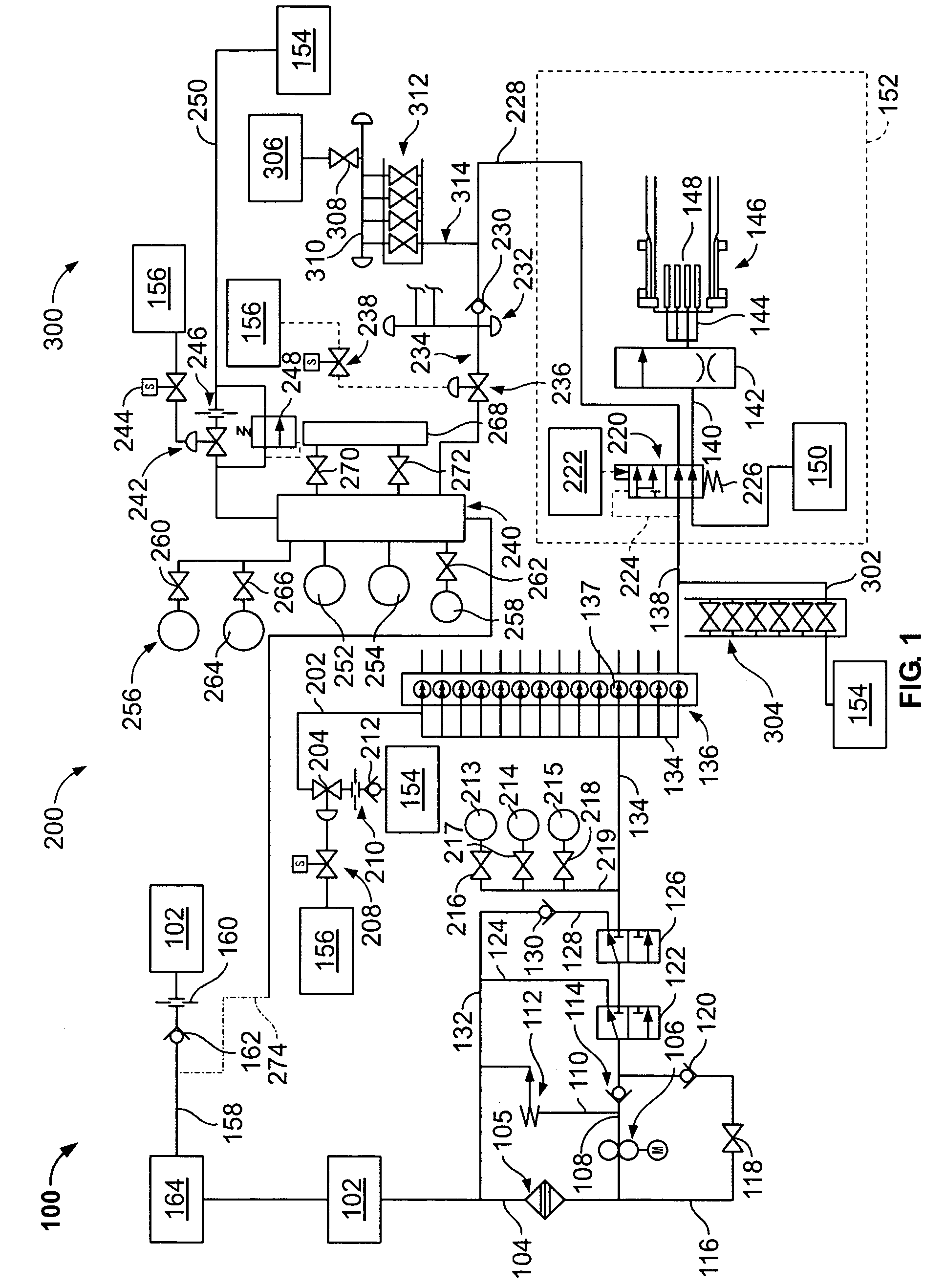Methods and apparatus for a combustion turbine fuel recirculation system and nitrogen purge system
a technology of nitrogen purge system and combustion turbine, which is applied in the direction of mechanical equipment, machines/engines, lighting and heating apparatus, etc., can solve the problems of carbon deposits in known existing combustion turbines with dual fuel capacity, and particulates may block liquid fuel passages, so as to facilitate the removal of air and residual fuel, facilitate the transfer of operating fuel modes, and mitigate the formation of carbonaceous precipitate parts
- Summary
- Abstract
- Description
- Claims
- Application Information
AI Technical Summary
Benefits of technology
Problems solved by technology
Method used
Image
Examples
Embodiment Construction
[0011]FIG. 1 is a schematic illustration of an exemplary embodiment of a liquid fuel system 100 having a fuel recirculation sub-system 200 and a nitrogen purge sub-system 300. Liquid fuel system 100 has at least one cavity that includes piping, headers, and tanks that further include a liquid fuel forwarding sub-system 102, a fuel pump suction header 104, at least one liquid fuel filter 105, a fuel pump 106, a fuel pump discharge header 108, a fuel pump discharge pressure relief valve header 110, a fuel pump discharge pressure relief valve 112, a fuel pump discharge check valve 114, a fuel pump bypass header 116, a bypass header manual blocking valve 118, a fuel pump bypass header check valve 120, a liquid fuel flow control valve 122, a control valve recirculation header 124, a liquid fuel flow stop valve 126, a stop valve recirculation header 128, a stop valve recirculation line check valve 130, a common recirculation header 132, a flow divider suction header 134, a flow divider 13...
PUM
 Login to View More
Login to View More Abstract
Description
Claims
Application Information
 Login to View More
Login to View More - R&D
- Intellectual Property
- Life Sciences
- Materials
- Tech Scout
- Unparalleled Data Quality
- Higher Quality Content
- 60% Fewer Hallucinations
Browse by: Latest US Patents, China's latest patents, Technical Efficacy Thesaurus, Application Domain, Technology Topic, Popular Technical Reports.
© 2025 PatSnap. All rights reserved.Legal|Privacy policy|Modern Slavery Act Transparency Statement|Sitemap|About US| Contact US: help@patsnap.com


